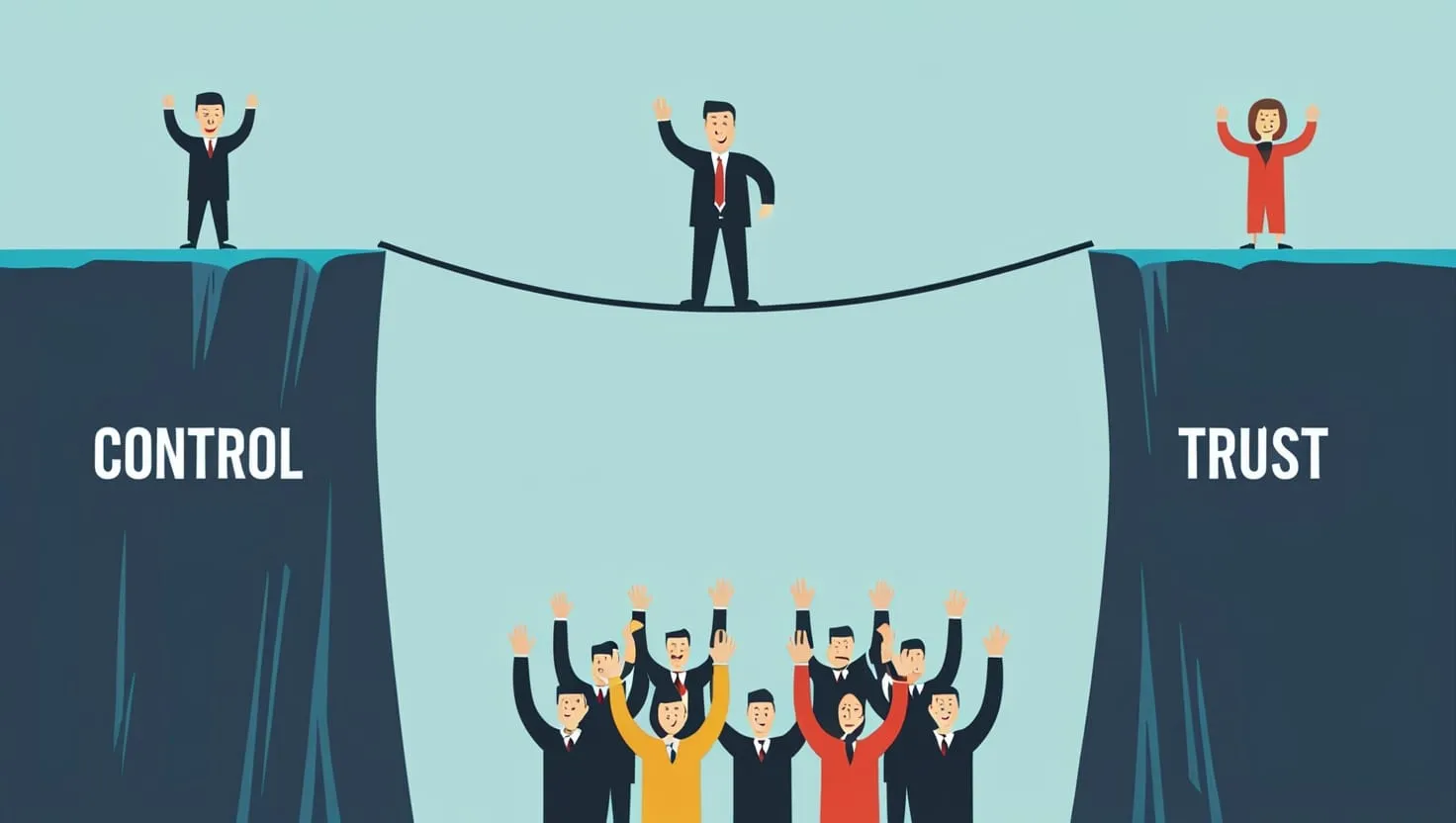In the world of finance, leadership styles can significantly impact the performance and morale of a team. One such style, often viewed with a mix of admiration and criticism, is micromanagement. Here’s the story of Vikram, a Chief Financial Officer (CFO) known for his meticulous and hands-on approach, and how his journey revealed the paradoxical effects of micromanagement.
Vikram was the epitome of a detail-oriented leader. He oversaw every financial decision, from budgeting to forecasting, with an eagle eye. His team respected his expertise and work ethic, but they also felt suffocated by his constant involvement in even the smallest tasks. For Vikram, it was about ensuring everything was perfect, but for his team, it felt like being treated as if they were incapable of handling their responsibilities.
The Hidden Costs of Micromanagement
Micromanagement, while intended to ensure precision and control, often has unintended consequences. One of the most significant effects is the stifling of creativity and innovation. When employees are given precise instructions on how to perform every task, they are left with little room for personal solutions or out-of-the-box thinking. Vikram's team, despite being highly skilled and experienced, felt their ideas were not valued or trusted. This led to a work environment where creativity was discouraged, and employees were reluctant to suggest new approaches or solutions.
Another critical issue with micromanagement is its impact on employee morale and motivation. Constant oversight can make employees feel undervalued and mistrusted. Vikram's team members often felt like they were being treated as if they were not adults capable of making decisions. This lack of trust and autonomy led to frustration and demoralization. Employees who were once enthusiastic and motivated began to feel exasperated and disconnected from their work.
The Productivity Paradox
One might assume that micromanagement would lead to higher productivity due to the tight control over tasks. However, the opposite is often true. When employees are unhappy with their management style, they are less likely to be in a mindset to work harder. Vikram's team, despite their capabilities, felt like doing less rather than more. The constant need for approval and the lack of independence in decision-making created a bottleneck that slowed down the entire process.
Moreover, micromanagement can lead to increased turnover, which is costly and inefficient for any organization. Vikram's team members started to look for other opportunities where they could be trusted and valued. The loss of skilled employees not only affected the team's morale but also the organization's overall performance.
The Fear Behind the Control
Micromanagement often stems from a leader's fear of losing control or a lack of trust in their team. Vikram, despite his confidence in his financial acumen, had an underlying fear that if he didn't oversee every detail, things would go wrong. This fear, coupled with his own insecurities about his abilities, made him cling to control even more tightly.
However, this approach can be particularly damaging in remote working setups, where managers have less direct oversight. The need for constant communication and approval can exacerbate the feeling of being micromanaged, leading to higher levels of anxiety and reduced job satisfaction among employees.
The Balance Between Oversight and Empowerment
So, how can leaders like Vikram find a balance between oversight and empowerment? The key lies in understanding when to be involved and when to step back. This is what some call the "accordion approach" – getting close to the team when necessary and pulling back when not.
Vikram realized that his involvement was necessary in certain critical areas, such as high-stakes financial decisions or when his unique expertise could expedite processes. However, in everyday tasks, he needed to trust his team and give them the autonomy to make decisions. By doing so, he not only freed himself from the burden of micromanaging but also empowered his team to take ownership of their work.
Letting Go of Control
Letting go of control is not easy, especially for leaders who have built their careers on being detail-oriented. However, it is crucial for fostering a healthy and productive work environment. When Vikram started to trust his team more, he noticed a significant improvement in morale and productivity. Employees felt valued and trusted, which encouraged them to be more creative and innovative.
Moreover, by not being the sole decision-maker, Vikram reduced the risk of errors that could arise from over-reliance on a single person. His team became more agile and responsive to market changes, as decisions were made more quickly and efficiently.
Building Trust and Autonomy
Building trust is at the heart of effective leadership. When leaders trust their teams, they create an environment where employees feel empowered to make decisions and take risks. This trust is not built overnight but through consistent actions and clear communication.
Vikram started by setting clear expectations and providing the necessary resources and support. He then gradually stepped back, allowing his team to handle more responsibilities. This approach not only built trust but also fostered autonomy, which is essential for job satisfaction and engagement.
The Paradoxical Outcome
The journey of Vikram and his team highlights the paradoxical nature of micromanagement. While control might seem like the key to success, it can actually lead to chaos and stagnation. By letting go of control and trusting his team, Vikram achieved better financial outcomes, improved team performance, and a more agile response to market changes.
This story challenges traditional notions of leadership in finance, offering fresh insights into the importance of balance between oversight and empowerment. It shows that effective leadership is not about controlling every detail but about creating an environment where employees can thrive and contribute their best.
In the end, Vikram's transformation from a micromanager to a leader who trusts and empowers his team was a turning point for his organization. It taught him that sometimes, the best way to achieve perfection is not to control everything but to trust in the abilities of those around him. This lesson is one that many leaders in finance and beyond can learn from, as they navigate the complex and ever-changing landscape of their industries.






